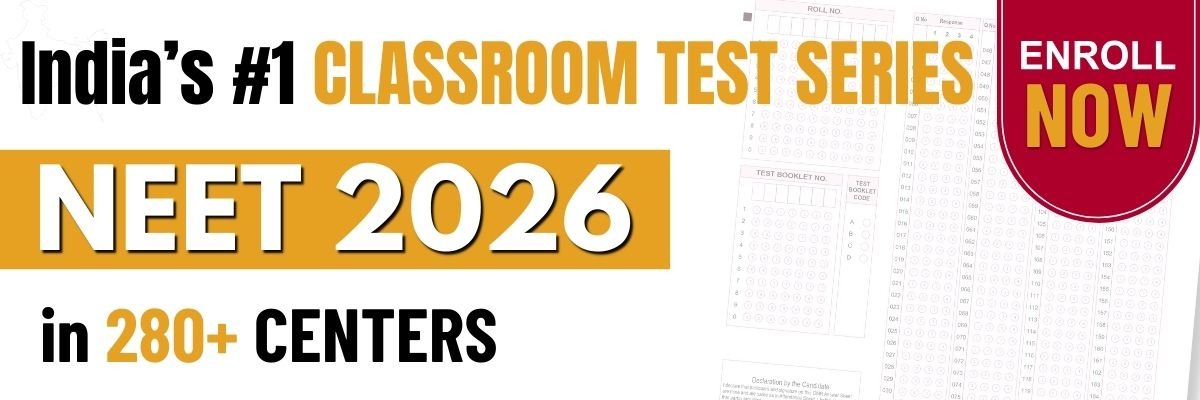Graphite in an example of-
1. Ionic solid
2. Covalent solid
3. Vander waal's crystal
4. Metallic crystal
ग्रेफाइट निम्न में से किसका उदाहरण है-
(1) आयनिक ठोस
(2) सहसंयोजक ठोस
(3) वान्डरवाल्स क्रिस्टल
(4) धात्विक क्रिस्टल
Lithium metal crystallises in a body centred cubic crystal. If the length of the side of the
unit cell of lithium is 351 pm, the atomic radius of the lithium will be
1. 240.8 pm
2. 151.8 pm
3. 75.5 pm
4. 300.5 pm
लीथियम धातु एक अंतःकेंद्रित घनीय क्रिस्टल में क्रिस्टलीकृत होता है। यदि लीथियम की एकक कोष्ठिका के भुजा की लंबाई 351 pm है, तो लीथियम का परमाणु त्रिज्या होगी
(1) 240.8 pm
(2) 151.8 pm
(3) 75.5 pm
(4) 300.5 pm
The unit cell dimensions of a cubic lattice (edges a, b, c and the angles between them, ) are
(1) a=b=c,
(2) a=bc,
(3) a=b=c,
(4) abc,
घनीय जालक (कोर a, b, c और उनके मध्य के कोण ) के एकक कोष्ठिका आयाम हैं-
(1) a=b=c,
(2) a=bc,
(3) a=b=c,
(4) abc,
Percentage of free space in cubic close packed structure and in body centered packed structure are respectively:
1. 48% and 26%
2. 30% and 26%
3. 26% and 32%
4. 32% and 48%
घनीय निविड़ संकुलित संरचना में और अंत:केंद्रित संकुलित संरचना में क्रमशः मुक्त आकाश का प्रतिशत हैं:
1. 48% और 26%
2. 30% और 26%
3. 26% और 32%
4. 32% और 48%
In a compound, atoms of element Y form ccp lattice, and those of element X occupy 2/3rd of tetrahedral voids. The formula of the compound will be :-
1. X3Y4
2. X4Y3
3. X2Y3
4. X2Y
एक यौगिक में, तत्व Y के परमाणु ccp जालक बनाते है और तत्व X चतुष्फलकीय रिक्ति के 2/3 पर कब्जा कर लेते हैं। यौगिक का सूत्र इस प्रकार होगा:-
(1) X3Y4
(2) X4Y3
(3) X2Y3
(4) X2Y
Schottky defect occurs mainly in electrovalent compound where
1. Positive ions have large sizes
2. Negative ions have small sizes
3. Positive and negative ions are of similar size
4. Positive ions are big and negative ions are small
शॉट्की दोष मुख्य रूप से वैद्युतसंयोजी यौगिक में होता है जहां
1. धनात्मक आयनों के बड़े आकार होते हैं
2. ऋणात्मक आयनों के छोटे आकार होते हैं
3. धनात्मक और ऋणात्मक आयन समान आकार के होते हैं
4. धनात्मक आयन बड़े होते हैं और ऋणात्मक आयन छोटे होते हैं
Copper crystallises in a face-centred cubic lattice with a unit cell length of 361 pm. What
is the radius of copper atom in pm?
1. 128
2. 157
3. 181
4. 108
361 pm की एकक कोष्ठिका लंबाई वाले एक फलक केंद्रित घनीय जालक में कॉपर क्रिस्टलीकृत होता है। कॉपर के परमाणु की त्रिज्या pm में क्या है?
(1) 128
(2) 157
(3) 181
(4) 108
Among the following types of voids, which one is the largest void-
(1) Triangular system
(2) Tetragonal system
(3) Monoclinic system
(4) Octahedral
निम्नलिखित प्रकार के रिक्तियों के मध्य, किसमें सबसे अधिक रिक्ति है-
(1) त्रिकोणीय समुदाय
(2) चतुष्कोणीय समुदाय
(3) एकनताक्ष समुदाय
(4) अष्टफलकीय
Iron has a body centred cubic unit cell with the cell dimension of 286.65 pm. Density of iron is 7.87 g cm-3. Use this information to calculate Avogadro's number.
(Atomic mass of Fe = 56.0 u)
1.
2.
3.
4.
आयरन में 286.65 pm के कोष्ठिका विमा वाली एक अंतःकेंद्रित घनीय एकक कोष्ठिका होती है। आयरन का घनत्व 7.87 g cm-3 है। आवोगाद्रो की संख्या की गणना करने के लिए इस जानकारी का उपयोग कीजिए।
(Fe का परमाणु द्रव्यमान = 56.0 u)
1.
2.
3.
4.
A metallic elements exists as a cubic lattice. Each edge of the unit cell is 2.88Å. The density of the metal is 7.20 g cm–3. How many unit cells will be present in 100 gm of the metal.
(1) 5.82 × 1023
(2) 6.33 × 1023
(3) 7.49 × 1024
(4) 6.9 × 1024
एक धात्विक तत्व एक घनीय जालक के रूप में उपस्थित है। एकक कोष्ठिका की प्रत्येक कोर 2.88 Å है। धातु का घनत्व 7.20 g cm–3 है। धातु के 100gm में कितनी एकक कोष्ठिकाएँ उपस्थित होंगी।
(1) 5.82 × 1023
(2) 6.33 × 1023
(3) 7.49 × 1024
(4) 6.9 × 1024






